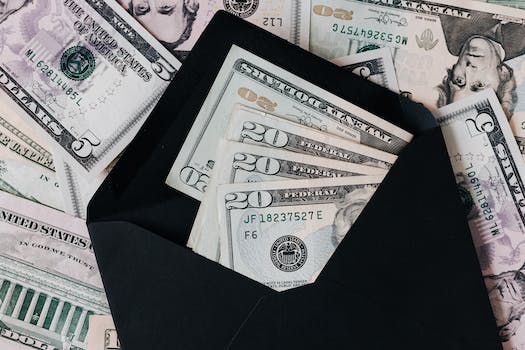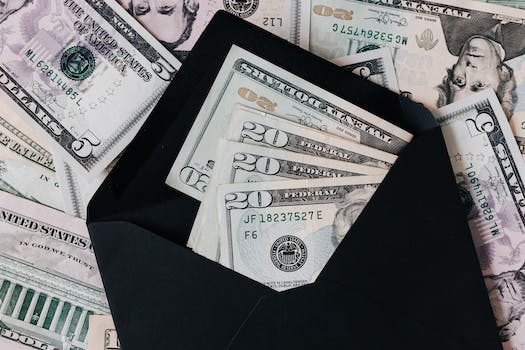How To Save Money Challenge
Introduction

The How To Save Money Challenge is a popular way to encourage individuals to be more mindful of their spending habits and to save money. It involves setting a specific goal for saving money over a certain period of time and implementing strategies to achieve that goal. The challenge can be done individually or with a group of friends or family members to create a sense of accountability and motivation. In this article, we will discuss some tips and tricks for successfully completing the How To Save Money Challenge.
10 Simple Ways to Cut Your Monthly Expenses
Are you tired of living paycheck to paycheck? Do you want to save more money but don’t know where to start? Look no further than the “How To Save Money Challenge.” By implementing these 10 simple ways to cut your monthly expenses, you can start saving money today.
1. Create a budget: The first step to saving money is knowing where your money is going. Create a budget that outlines your monthly income and expenses. This will help you identify areas where you can cut back.
2. Cut back on dining out: Eating out can be expensive. Try cooking at home more often and packing your lunch for work. Not only will you save money, but you’ll also eat healthier.
3. Cancel subscriptions: Do you have subscriptions to magazines, streaming services, or other monthly services that you don’t use? Cancel them and put that money towards your savings.
4. Shop around for insurance: Insurance can be a significant expense. Shop around for better rates on car, home, and health insurance. You may be able to save hundreds of dollars a year.
5. Use coupons and promo codes: Before making a purchase, search for coupons and promo codes online. You may be able to save a significant amount of money on your purchase.
6. Buy generic: When shopping for groceries and household items, opt for generic brands instead of name brands. They are often just as good and can save you money.
7. Cut back on energy usage: Lower your energy bill by turning off lights and electronics when not in use, using energy-efficient light bulbs, and adjusting your thermostat.
8. Use public transportation: If possible, use public transportation instead of driving. This can save you money on gas, maintenance, and parking.
9. Sell unused items: Do you have items in your home that you no longer use or need? Sell them online or at a garage sale and put that money towards your savings.
10. Avoid impulse purchases: Before making a purchase, ask yourself if you really need it. Avoid impulse purchases and only buy what you need.
By implementing these 10 simple ways to cut your monthly expenses, you can start saving money today. Remember, saving money is a journey, not a destination. It takes time and effort, but the rewards are worth it. Start small and gradually increase your savings. You’ll be surprised at how much you can save over time. Good luck on your savings journey!
The Ultimate Guide to Meal Planning on a Budget
Are you tired of constantly overspending on groceries? Do you want to save money while still enjoying delicious and nutritious meals? Look no further than the How To Save Money Challenge, specifically the Ultimate Guide to Meal Planning on a Budget.
Meal planning is a crucial aspect of saving money on groceries. By planning out your meals for the week, you can avoid impulse purchases and ensure that you only buy what you need. Start by taking inventory of what you already have in your pantry and fridge. This will help you avoid buying duplicates and wasting food.
Next, make a list of meals you want to make for the week. Consider using ingredients that can be used in multiple meals, such as chicken or rice. This will help you save money and reduce food waste. Don’t forget to include snacks and breakfast items on your list as well.
Once you have your list, it’s time to hit the grocery store. Stick to your list and avoid buying anything that isn’t necessary. Consider buying generic or store-brand items, as they are often cheaper than name-brand products. Don’t be afraid to buy in bulk, especially for non-perishable items like rice or pasta.
When you get home from the grocery store, take the time to prep your meals for the week. This can include chopping vegetables, marinating meat, or cooking grains. By doing this ahead of time, you’ll save time during the week and be less likely to order takeout or eat out.
Another way to save money on groceries is to buy seasonal produce. Not only is it often cheaper, but it’s also fresher and more flavorful. Consider visiting your local farmer’s market or joining a community-supported agriculture (CSA) program.
If you’re looking for even more ways to save money on groceries, consider meal prepping. This involves cooking and portioning out meals for the week ahead of time. Not only does this save money, but it also saves time and reduces food waste.
When meal prepping, consider using ingredients that can be used in multiple meals. For example, cook a large batch of chicken that can be used in salads, wraps, or stir-fries throughout the week. Don’t forget to label and date your meals to ensure freshness.
In addition to meal planning and prepping, there are other ways to save money on groceries. Consider using coupons or shopping during sales. Don’t be afraid to buy frozen fruits and vegetables, as they are often cheaper and just as nutritious as fresh produce.
Finally, don’t forget to use leftovers. Instead of throwing out food, repurpose it into a new meal. For example, leftover chicken can be used in a quesadilla or salad. This not only saves money, but it also reduces food waste.
In conclusion, meal planning and prepping are essential for saving money on groceries. By taking inventory of what you already have, making a list, and sticking to it at the grocery store, you can avoid impulse purchases and reduce food waste. Consider buying seasonal produce, using coupons, and repurposing leftovers to save even more money. With these tips, you’ll be able to enjoy delicious and nutritious meals while staying within your budget.
How to Shop Smart and Save Money on Groceries
Are you tired of overspending on groceries every month? Do you want to learn how to shop smart and save money? Well, you’re in luck because we have some tips and tricks to help you with the “How to Save Money Challenge.”
Firstly, it’s important to plan your meals ahead of time. This means creating a grocery list and sticking to it. Don’t go to the store without a plan, or you’ll end up buying unnecessary items. Take some time to think about what meals you want to make for the week and write down the ingredients you need. This will not only save you money but also time.
Another way to save money on groceries is to buy in bulk. This is especially useful for non-perishable items such as rice, pasta, and canned goods. Buying in bulk can save you a lot of money in the long run, as you won’t have to keep buying the same items every week. Just make sure to check the expiration dates before purchasing.
When it comes to fresh produce, try to buy what’s in season. Fruits and vegetables that are in season are usually cheaper and taste better. Plus, they’re more likely to be locally sourced, which is better for the environment. If you’re not sure what’s in season, do a quick Google search or ask your local grocery store.
Another tip is to buy generic brands instead of name brands. Generic brands are often just as good as name brands, but they’re much cheaper. Don’t be fooled by fancy packaging or advertising – sometimes the cheaper option is just as good, if not better.
If you’re someone who likes to snack, try to make your own snacks instead of buying pre-packaged ones. This not only saves you money but also allows you to control what goes into your snacks. For example, instead of buying a bag of chips, make your own kale chips by baking kale in the oven with some olive oil and salt.
Lastly, don’t be afraid to use coupons and take advantage of sales. Check your local newspaper or online for coupons and deals. You can also sign up for your grocery store’s loyalty program to receive discounts and special offers. Just make sure to only use coupons for items you actually need, and don’t let sales trick you into buying things you don’t need.
In conclusion, there are many ways to shop smart and save money on groceries. By planning your meals ahead of time, buying in bulk, buying what’s in season, choosing generic brands, making your own snacks, and using coupons and sales, you can save a significant amount of money every month. So, take on the “How to Save Money Challenge” and see how much you can save!
5 Creative DIY Projects to Save Money at Home
Are you looking for ways to save money at home? Look no further than these five creative DIY projects that can help you cut costs and reduce your expenses.
1. Make Your Own Cleaning Products
Cleaning products can be expensive, but you can save money by making your own. All you need are a few simple ingredients like vinegar, baking soda, and essential oils. These ingredients can be used to make everything from all-purpose cleaners to laundry detergent. Not only will you save money, but you’ll also be using natural, non-toxic products that are better for your health and the environment.
2. Grow Your Own Food
Growing your own food is a great way to save money on groceries. You don’t need a lot of space to start a garden – even a small balcony or patio can be used to grow herbs, vegetables, and fruits. Not only will you save money, but you’ll also have fresh, healthy produce right at your fingertips.
3. Upcycle Old Furniture
Instead of buying new furniture, consider upcycling old pieces. With a little creativity and some DIY skills, you can turn an old dresser into a stylish new piece for your home. Not only will you save money, but you’ll also be reducing waste and giving new life to something that might have otherwise ended up in a landfill.
4. Make Your Own Clothes
Sewing your own clothes might seem daunting, but it’s actually easier than you might think. With a few basic sewing skills and some simple patterns, you can create your own wardrobe at a fraction of the cost of buying new clothes. Plus, you’ll have unique, one-of-a-kind pieces that no one else has.
5. Install Energy-Saving Devices
Energy bills can be a major expense, but you can reduce your costs by installing energy-saving devices in your home. LED light bulbs, programmable thermostats, and low-flow showerheads are just a few examples of devices that can help you save money on your energy bills. Not only will you save money, but you’ll also be reducing your carbon footprint and helping the environment.
In conclusion, there are many creative DIY projects that can help you save money at home. From making your own cleaning products to growing your own food, these projects are not only cost-effective but also environmentally friendly. So why not take on the challenge of saving money and try one of these projects today? Your wallet – and the planet – will thank you.
The Benefits of a No-Spend Challenge and How to Do It
Saving money can be a daunting task, especially when you have bills to pay and a lifestyle to maintain. However, there are ways to cut back on expenses without sacrificing your quality of life. One popular method is the no-spend challenge, which involves going a certain period of time without spending any money on non-essential items. In this article, we will explore the benefits of a no-spend challenge and provide tips on how to successfully complete one.
The Benefits of a No-Spend Challenge
The most obvious benefit of a no-spend challenge is the money you will save. By cutting out unnecessary expenses, you can redirect that money towards paying off debt, building an emergency fund, or investing in your future. Additionally, a no-spend challenge can help you identify areas where you may be overspending and make adjustments to your budget accordingly.
Another benefit of a no-spend challenge is the opportunity to practice self-discipline and mindfulness. It can be easy to fall into the trap of mindless spending, especially with the convenience of online shopping and subscription services. By taking a break from spending, you can become more aware of your habits and make intentional choices about where you want your money to go.
Finally, a no-spend challenge can be a fun and creative way to challenge yourself and connect with others. You can invite friends or family members to join you in the challenge, share tips and resources, and celebrate your successes together.
How to Do a No-Spend Challenge
The first step in a no-spend challenge is to set a clear goal and timeframe. You may choose to go a week, a month, or even longer without spending money on non-essential items. Be realistic about what you can commit to and make sure to communicate your goals with anyone who may be affected by your spending habits.
Next, take an inventory of your current expenses and identify areas where you can cut back. This may include eating out less, canceling subscriptions, or finding free alternatives to entertainment and activities. Make a list of your essential expenses, such as rent, utilities, and groceries, and create a budget that allows for those expenses while eliminating non-essential spending.
During the challenge, it can be helpful to track your progress and hold yourself accountable. You may choose to use a journal or spreadsheet to record your expenses and reflect on your habits. You can also find support and motivation by connecting with others who are participating in the challenge.
Finally, celebrate your successes and learn from any challenges or setbacks. Completing a no-spend challenge can be a significant accomplishment, and it can inspire you to continue making intentional choices about your spending habits in the future.
In conclusion, a no-spend challenge can be a powerful tool for saving money, practicing self-discipline, and connecting with others. By setting clear goals, identifying areas to cut back, and holding yourself accountable, you can successfully complete a no-spend challenge and reap the benefits of intentional spending. So why not give it a try? You may be surprised at how much you can accomplish when you take a break from spending.
How to Save Money on Travel: Tips and Tricks
Are you looking to save money on your next travel adventure? Look no further! Here are some tips and tricks to help you save money while still having a great time.
Firstly, consider traveling during the off-season. Not only will you avoid the crowds, but you’ll also save money on flights and accommodations. Plus, you’ll have a more authentic experience as you’ll be able to interact with locals more easily.
Another way to save money on travel is to be flexible with your dates. If you’re able to travel mid-week instead of on the weekends, you’ll often find cheaper flights and accommodations. Additionally, consider using websites like Skyscanner or Kayak to compare prices across multiple airlines and hotels.
When it comes to accommodations, consider staying in hostels or Airbnb rentals instead of hotels. Not only are they often cheaper, but you’ll also have the opportunity to meet other travelers and locals. Plus, many Airbnb rentals come with a kitchen, allowing you to save money on meals by cooking your own food.
Speaking of meals, eating out can quickly add up. Instead, consider packing snacks and meals for your travels. This not only saves money, but it also allows you to have more control over what you’re eating. Additionally, look for local markets and grocery stores to buy fresh produce and other ingredients for meals.
Transportation can also be a major expense while traveling. Consider using public transportation instead of taxis or rental cars. Not only is it often cheaper, but it also allows you to see more of the local culture. Additionally, consider walking or biking to explore your destination.
Finally, look for free or low-cost activities to do while traveling. Many museums and attractions offer free admission on certain days or during certain times. Additionally, consider exploring local parks and hiking trails for a low-cost way to experience the natural beauty of your destination.
In conclusion, there are many ways to save money while traveling. By being flexible with your dates, accommodations, and transportation, as well as packing your own meals and looking for free or low-cost activities, you can have a great travel experience without breaking the bank. So, why not take on the challenge of saving money on your next adventure? Happy travels!
The Importance of Building an Emergency Fund and How to Start
Saving money can be a daunting task, especially when you have bills to pay and a limited income. However, it is essential to have a financial cushion to fall back on in case of emergencies. This is where building an emergency fund comes in. An emergency fund is a stash of money set aside to cover unexpected expenses such as medical bills, car repairs, or job loss. In this article, we will discuss the importance of building an emergency fund and how to start.
Why is an emergency fund important?
Life is unpredictable, and emergencies can happen at any time. Without an emergency fund, you may find yourself in a financial crisis, struggling to pay bills or borrowing money from friends and family. An emergency fund provides a safety net, giving you peace of mind and financial security. It also helps you avoid going into debt or using credit cards to cover unexpected expenses.
How much should you save?
The amount you need to save depends on your individual circumstances. Financial experts recommend having at least three to six months’ worth of living expenses in your emergency fund. This means calculating your monthly expenses, including rent/mortgage, utilities, food, transportation, and any other bills. Multiply this amount by three or six, depending on your comfort level and financial situation.
How to start building an emergency fund?
The first step in building an emergency fund is to set a savings goal. Determine how much you need to save and how long it will take you to reach that goal. You can use a savings calculator to help you figure out how much you need to save each month to reach your goal.
Next, create a budget and look for ways to cut expenses. This could mean reducing your cable bill, eating out less, or canceling subscriptions you don’t use. Every dollar you save can go towards your emergency fund.
Another way to boost your emergency fund is to increase your income. Consider taking on a side hustle or selling items you no longer need. You can also redirect any windfalls, such as tax refunds or bonuses, towards your emergency fund.
Where to keep your emergency fund?
It’s important to keep your emergency fund in a separate account from your regular checking or savings account. This will help you avoid dipping into your emergency fund for non-emergency expenses. Consider opening a high-yield savings account or a money market account, which offer higher interest rates than traditional savings accounts.
In conclusion, building an emergency fund is an essential part of financial planning. It provides a safety net and financial security in case of unexpected expenses. Start by setting a savings goal, creating a budget, and looking for ways to cut expenses and increase your income. Keep your emergency fund in a separate account and avoid using it for non-emergency expenses. With time and dedication, you can build a solid emergency fund and achieve financial peace of mind.
Conclusion
Conclusion: The How To Save Money Challenge is a great way to improve your financial habits and achieve your financial goals. By setting a specific goal, tracking your expenses, and finding ways to cut back on unnecessary spending, you can save money and improve your financial situation. It may take some time and effort, but the benefits of saving money are well worth it in the long run.







